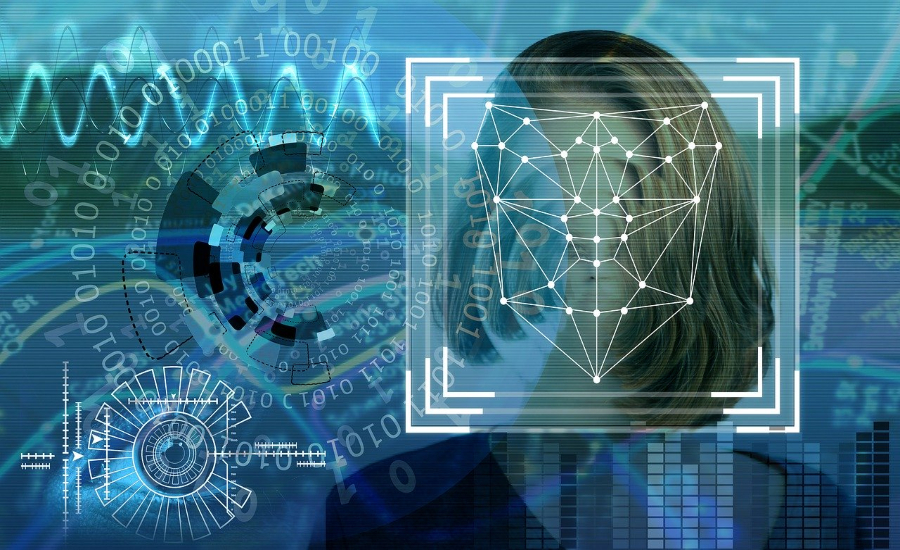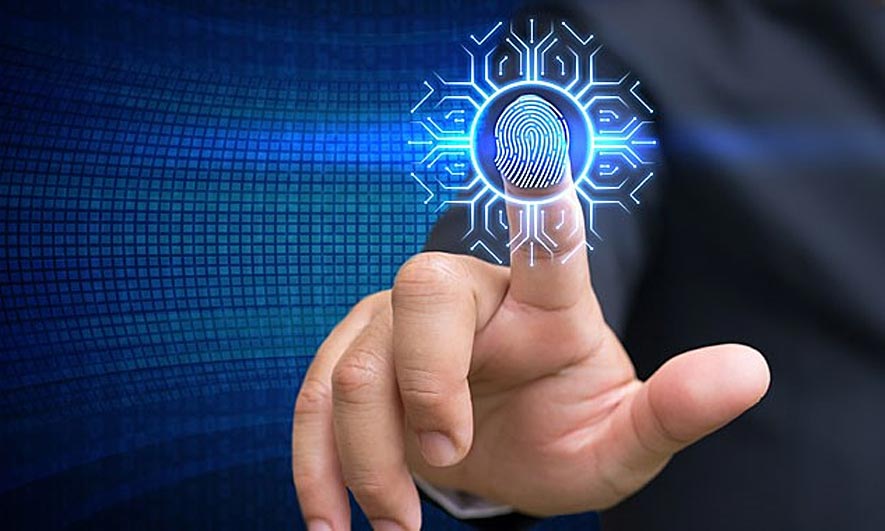The risks of biometric security include potential data breaches, identity theft, and privacy concerns. Biometric data, once compromised, cannot be changed like a password.
This poses a significant risk to individuals and organizations. Biometric systems may also be vulnerable to spoofing or hacking, leading to unauthorized access. In addition, there are ethical considerations regarding the collection and use of biometric information. Biometric security has become increasingly prevalent in various sectors, including finance, healthcare, and government.
While offering improved security, it also presents challenges and risks that need to be carefully addressed. Understanding these risks is crucial for mitigating potential threats and implementing effective biometric security measures. Consequently, organizations must balance the benefits of biometric security with the potential risks and take proactive steps to safeguard biometric data and ensure privacy and security for all users.
Introduction To Biometric Security
Biometric security is a cutting-edge technology that uses unique biological characteristics, such as fingerprints, facial features, and iris patterns, to verify an individual’s identity. This method offers a highly secure and convenient alternative to traditional password or PIN-based systems.
Definition Of Biometric Security
Biometric security refers to the use of individual biological traits as a means of authenticating a person’s identity. This can include characteristics such as fingerprints, facial recognition, iris scans, voice patterns, and even DNA. By utilizing these distinguishing features, biometric security seeks to provide highly accurate and secure means of identification and access control.
Importance Of Biometric Security In Modern Technology
Biometric security plays a critical role in modern technology by offering a robust and reliable method of safeguarding sensitive data and physical locations. In a rapidly evolving digital landscape, the need for secure authentication measures has become paramount, making biometric security an indispensable tool for businesses and individuals alike.

Credit: www.securitymagazine.com
Vulnerabilities Of Biometric Data
Biometric security systems provide a high level of protection due to their unique nature of relying on physiological or behavioral characteristics for authentication. However, despite their efficiency, there are certain vulnerabilities associated with the storage and usage of biometric data. Understanding the risks and challenges related to biometric security is crucial to implementing effective measures for safeguarding such sensitive information.
Privacy Concerns Related To Biometric Data
Biometric data, including fingerprints, iris scans, and facial recognition patterns, is extremely personal and can lead to serious privacy concerns if mishandled. As biometric information is linked to an individual’s identity, any unauthorized access or misuse of this data can result in severe breaches of privacy. This aspect is particularly concerning as biometric data cannot be easily changed or replaced, making individuals more vulnerable to long-term privacy threats.
Potential Risks Of Unauthorized Access To Biometric Information
Unauthorized access to biometric information poses a significant risk, as it can lead to identity theft, fraud, and exposure to security threats. Unlike traditional passwords or PINs, biometric data is static and irrevocable, making it critical to protect it from unauthorized access. The compromise of biometric information can have far-reaching consequences, as it may provide malefactors with the means to impersonate individuals or access sensitive personal and financial data.
Threats To Biometric Authentication
While biometric security offers a promising layer of protection for digital assets and personal information, it is not without its vulnerabilities. Threats to biometric authentication are a concern for both individuals and organizations as advancements in technology continue to raise questions about the security of biometric data.
Challenges Of Spoofing And Impersonation
Spoofing and impersonation are significant challenges facing biometric authentication systems. Spoofing involves using fake biometric data to gain unauthorized access, while impersonation occurs when an individual attempts to imitate another person’s biometric traits, such as fingerprints or facial features, to trick the system. Sophisticated techniques, such as creating lifelike masks or using high-resolution photographs, can bypass biometric security measures, posing a serious threat to sensitive information and secure facilities.
Risks Associated With Data Breaches And Identity Theft
Biometric data breaches can have severe consequences, including identity theft and fraudulent activities. If a database containing biometric information is compromised, it can lead to the unauthorized use of individuals’ biometric data to gain access to personal accounts, financial resources, or sensitive information. The repercussions of such breaches can be long-lasting, as biometric data, unlike passwords or PINs, cannot be changed or reset.
Legal And Ethical Considerations
Legal and ethical considerations play a crucial role in the use of biometric security technologies. As the adoption of biometric systems continues to expand in various industries, it is essential to carefully assess the potential risks and implications from a legal and ethical standpoint.
Regulatory Issues Surrounding The Use Of Biometric Data
When implementing biometric security measures, organizations need to be mindful of the ever-evolving legal landscape pertaining to biometric data. Various countries and regions have enacted specific regulations to govern the collection, storage, and usage of biometric information. For instance, the General Data Protection Regulation (GDPR) in the European Union and the Biometric Information Privacy Act (BIPA) in the United States impose stringent requirements for obtaining consent, implementing security measures, and ensuring transparency in handling biometric data.
Ethical Considerations In The Collection And Storage Of Biometric Information
Collecting and storing biometric data raise ethical concerns regarding privacy, consent, and potential misuse. Organizations must prioritize the ethical collection and use of biometric information to safeguard individuals’ privacy rights. It’s imperative to establish robust policies and practices for obtaining explicit consent, transparently communicating the purpose of biometric data collection, and implementing robust security measures to prevent unauthorized access or breaches.
Mitigating Biometric Security Risks
Mitigating biometric security risks is crucial for organizations looking to adopt biometric authentication systems. While biometric security offers strong safeguards, it also presents certain inherent risks that must be addressed to ensure optimal protection of sensitive data and user privacy.
Best Practices For Biometric Data Protection
Implementing best practices for biometric data protection is essential to minimize the risks associated with biometric security.
- Use encryption: Utilize strong encryption algorithms to secure biometric templates and data in transit and at rest.
- Multi-factor authentication: Combine biometric authentication with additional layers of security, such as passwords or tokens, to enhance overall system security.
- Regular audits: Conduct regular audits of biometric security systems to identify and address potential vulnerabilities.
- Data segregation: Store biometric data separately from other sensitive information to minimize the impact of a potential breach.
Emerging Technologies For Enhancing Biometric Security
Emerging technologies offer innovative ways to enhance biometric security and address potential risks.
- Liveness detection: Implement liveness detection technology to verify that the biometric sample is from a living, present individual, reducing the risk of spoofing.
- Blockchain integration: Leverage blockchain technology to create tamper-resistant records of biometric data transactions, enhancing security and privacy.
- Behavioral biometrics: Incorporate behavioral biometrics, such as keystroke dynamics and gait analysis, to add an extra layer of security and authentication.
Frequently Asked Questions On What Are The Risks Of Biometric Security?
What Are The Problems With Biometrics?
The problems with biometrics include potential security risks, privacy concerns, and the possibility of false positives. Additionally, there may be issues with accuracy, high implementation costs, and the need for standardized protocols.
What Is The Main Drawback Of Biometrics?
The main drawback of biometrics is the potential privacy and security concerns. Biometric data can be stolen or misused.
Are Biometrics Bad For Privacy?
Biometrics can present privacy concerns, as it involves using unique physical characteristics for identification. However, it also offers enhanced security and convenience. To protect privacy, it’s crucial to implement strong data encryption and strict access controls. Regular security audits and user consent are also essential to address privacy issues.
What Are The Ethical Concerns Of Biometric System?
Ethical concerns of biometric systems include privacy infringement, data security risks, and potential discrimination. Mandatory consent, data protection, and fair treatment are essential for ethical use. Regular audits and clear policies can help address these concerns.
Conclusion
In weighing the benefits and risks of biometric security, it’s clear that while it offers convenience and enhanced security, it also comes with concerns such as potential data breaches and privacy violations. As technology continues to evolve, it’s crucial to address these risks and work towards implementing strong security measures to protect sensitive biometric data.

